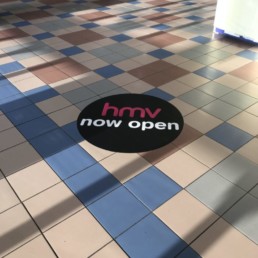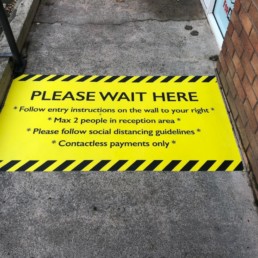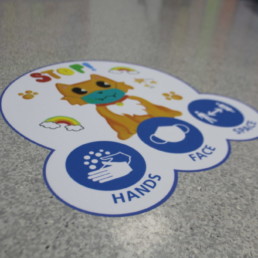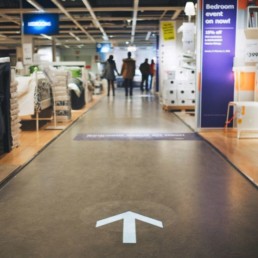Signage in the healthcare sector has constantly been improving to help everybody understand the different areas. If there is a sector that is always on the top list about signage, it’s the NHS. As a care service that provides to all ages, there is a need for key NHS signs to be used.
When it comes to directions at NHS buildings, people look for easily pronounced terms without embarrassment or the possibility of confusion. When we talk about the NHS, we imagine big buildings which have many main entrances and exits. Each building might have fewer entries that are prominent for different reasons. This makes things hard if people don’t follow the signs correctly.
NHS buildings use a strategy in their wayfinding that aims to ensure wayfinding for all patients and visitors is kept as simple as possible.
>> Getting to the Site
Before entering the main doors, all visitor information should easily identify the routes to access the site. Directional maps that detail public transport stops, pedestrian routes and drop-off and pick up points are really useful information for patients and visitors.
>> Locational Signs
Destinations without distinguishing features must rely on locational signs to show people that they have arrived at their destination. These signs need to be prominently positioned and legible. Locational signs must link with what people are expecting their destination to be called.
It starts from the main entrance where visitors will come in and continues with all department’s guidance, emergency, and other vital services.
Read our blog ‘Different Types of Wayfinding Solutions for Hospitals and GP Surgeries’
>> Directional Signage
Directional signs are usually suspended from ceilings or wall-mounted. Each floor has its relevant directory of departments, placed within each entrance, which identifies the floor levels of the department, lift area etc.
Directional signs are provided to direct patients, staff, and visitors from the entry to all major destinations, including the room that’s required. Dark lettering on a light background is used for clarity and ease of reading.
Directional signs in the main entry area, lift lobbies areas may include braille lettering for visually impaired visitors. Ideally, it is suggested that signs with braille should be located above the handrail.
Usually, people know that when entering a building from the street, they will be on the ground floor and expect the following floors to go up. If you find it different, look for information that explains the floor numbering system as there should be a logical system prepared.
Generally, floor numbering should relate to the main entry floor, using numbers that indicate which floors are above or below the entry floor. Where there are main entry points on two or more floors, a decision needs to be made on which to call Ground Floor, and people should be made aware that there are entrances on different floors as they enter the building.
>> Floor Graphics
Floor graphics are perfect for saving space and pointing things out such as hand sanitiser dispensers, social distancing, or directing people to another destination. Sealed with an anti-slip coating, they adhere to the floor evenly to prevent tripping or slipping on the surface while keeping the sign itself scuff-free.
Differentiating between safety information and wayfinding information through shapes and colour. Safety signs are designed to look different from other information, such as wayfinding.
It is crucial to consider the positioning of safety signs to work alongside the wayfinding system rather than against it. Some healthcare sites were found to have positioned Fire Exit signs, so they obscured a directional or locational sign; other signs had confused safety information with directional information. Wayfinding information should differ in design and colour from the safety information at your site.
>> Door & Bed Numbers
Bed numbers assist staff and visitors in finding patients or bed locations as swiftly as possible. Each bed should be provided with a different number. Bed numbers should be located outside the patient bedroom, clearly visible in the corridor and not obscured by equipment parked beside rooms.
For multi-bedrooms, a range of numbers may be shown outside the bedroom. In some facilities, a room/door number will be required on the door frame for maintenance purposes. If room/door numbering is required for a whole facility, it is recommended that numbering is stable throughout.
>> Emergency Signs
A hospital or medical facility is like any other commercial business, and like any other commercial business, they need to have proper emergency signage. These types of signs alert patients, visitors, and staff to dangers and offer essential information necessary in an emergency.
This kind of signage includes warning placards displayed near dangerous equipment or containers where sharps waste are discarded and signs instructing individuals to stay away from rooms where radiation is being emitted. Another essential type of emergency healthcare signage is commercial signs directing the building’s occupants towards emergency exits or instructing them in proper emergency procedures such as using the stairs instead of elevators in the event of a fire.
Having easily visible healthcare signage communicates properly and sends the right message about the kind of care patients can expect there.
Types of Signage:
Banners – Fixed and ‘roll-up’ type
Banners promoting various health initiatives, charity events and advice are frequently used throughout hospitals and healthcare facilities.
In this instance, the use of ‘roll-up/roll down’ display posters may be more effective. Again, positioning and relevance to the department should be considered. If these posters relate to an annual initiative, it may be cost-effective to consider their use.
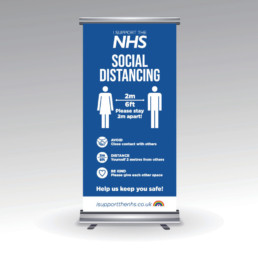
Vinyl wrapping displays and wall stickers
It is becoming popular to have semi-permanent promotional material within hospitals. Careful consideration to their effectiveness and relevance should be considered before a request for their use is made.
Typically, these types of imagery are significant, and space is often an issue. It has therefore become popular to fix these types of displays to either; walls, lift doors, glass walls, windows, and general department doors or even floors.

Like what you see here?
Get in touch with us to see how we can help your business or brand.
Call us on 01283 569 102
